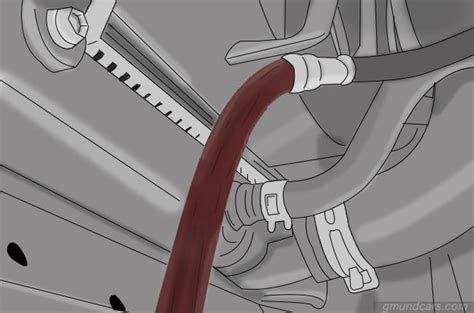Manual Transmission Flush: The Complete Guide
Maintaining your manual transmission is crucial for its longevity and smooth operation. While some argue against frequent fluid changes, a manual transmission flush, when done correctly, can significantly extend the life of your gearbox and prevent costly repairs down the line. This comprehensive guide will walk you through everything you need to know about manual transmission flushes, from understanding why they're necessary to performing the procedure yourself.
Why Flush Your Manual Transmission Fluid?
Over time, manual transmission fluid (MTF) degrades. Friction within the gearbox generates heat, breaking down the fluid's lubricating properties and causing it to lose its ability to protect against wear and tear. Contaminants, such as metal particles from gear wear and debris, also accumulate, further reducing the fluid's effectiveness. This leads to several problems:
- Hard Shifting: Degraded fluid makes shifting gears difficult and clunky.
- Gear Grinding: Severe degradation can result in gear grinding, a telltale sign of serious damage.
- Reduced Gearbox Life: Poor lubrication accelerates wear on internal components, ultimately shortening the life of your transmission.
- Transmission Failure: In extreme cases, neglecting fluid changes can lead to complete transmission failure, requiring costly repairs or replacement.
Regular fluid changes, including a thorough flush, mitigate these risks and keep your transmission running smoothly.
How Often Should You Flush Your Manual Transmission?
The frequency of manual transmission flushes depends on several factors, including the type of driving you do, the age of your vehicle, and the manufacturer's recommendations. However, a general guideline is to flush your manual transmission fluid every 30,000 to 60,000 miles (48,000 to 96,000 kilometers), or every 2 to 4 years, whichever comes first. Harsh driving conditions, such as frequent towing or off-roading, may necessitate more frequent flushes. Always consult your vehicle's owner's manual for the manufacturer's specific recommendations.
What if my manual transmission doesn't require scheduled fluid changes according to the owner's manual?
Some manufacturers claim their manual transmissions are "lifetime filled," meaning they don't require fluid changes. However, even in these cases, a fluid inspection and potential flush after a significant mileage interval (e.g., 100,000 miles) is advisable. Fluid degradation still occurs, and an inspection can reveal potential problems early on.
What's the Difference Between a Drain and Fill vs. a Flush?
A simple drain and fill involves draining the old fluid and refilling with new fluid. This method removes only a portion of the old fluid, leaving some residual contaminated fluid behind. A flush, on the other hand, utilizes specialized equipment to force out the old fluid completely, ensuring a more thorough cleaning. While a drain and fill is less complex and cheaper, a flush is more effective at removing contaminants.
What You'll Need for a Manual Transmission Flush
Performing a manual transmission flush yourself requires the right tools and supplies:
- New Manual Transmission Fluid: Use the type and quantity specified in your vehicle's owner's manual.
- Drain Pan: A large capacity pan to collect the old fluid.
- Wrench: The correct size to remove the drain plug.
- Fill Plug Wrench: A wrench specifically designed for the fill plug.
- Funnel: A funnel to easily pour the new fluid into the transmission.
- Jack and Jack Stands (or a lift): Essential for safe access to the transmission drain and fill plugs.
- Gloves and Safety Glasses: Always prioritize safety.
- Torque Wrench (Recommended): Ensures proper tightening of the drain and fill plugs.
- Fluid Transfer Pump (For Flush): This is needed if you are doing a power flush.
Important Note: Always consult your vehicle's repair manual for specific torque specifications.
Step-by-Step Guide to a Manual Transmission Flush (Power Flush Method)
This procedure outlines a power flush; always consult your vehicle's manual for specifications. Improper procedures can damage your transmission.
- Warm Up the Transmission: Drive your vehicle for 10-15 minutes to warm the transmission fluid, making it flow more easily.
- Secure the Vehicle: Safely lift your vehicle using a jack and secure it with jack stands.
- Locate the Drain and Fill Plugs: Consult your vehicle's repair manual for their exact locations.
- Drain the Old Fluid: Carefully remove the drain plug, letting the old fluid drain completely into your drain pan.
- Replace the Drain Plug: Once drained, reinstall the drain plug, tightening it to the manufacturer's specifications using a torque wrench.
- Connect the Flush Machine: Connect the flush machine following manufacturer's instructions.
- Flush the Transmission: Run the flush machine according to its instructions, allowing it to completely circulate and remove the old fluid.
- Disconnect the Flush Machine: Carefully disconnect the flush machine when finished.
- Fill the Transmission: Using a funnel, add new manual transmission fluid through the fill plug opening to the recommended level indicated in your owner's manual.
- Replace the Fill Plug: Tighten the fill plug to the manufacturer's specification using a torque wrench.
- Lower the Vehicle: Carefully lower your vehicle from the jack stands.
- Check Fluid Level: After driving for a short distance, recheck the fluid level and top off if necessary.
Can I do a Manual Transmission Drain and Fill Myself?
Yes, a drain and fill is significantly simpler than a power flush. Follow the steps above, omitting steps 6-8. However, remember this method is less effective at removing all contaminated fluid.
When to Seek Professional Help
If you're uncomfortable performing a manual transmission flush yourself, or if you suspect a more serious problem with your transmission, it's best to take your vehicle to a qualified mechanic. They have the expertise and equipment to diagnose and address any issues effectively.
This comprehensive guide offers a deep dive into manual transmission flushes. Remember always to consult your vehicle's owner's manual for specific instructions and recommendations. Regular maintenance, including fluid changes, will ensure your manual transmission runs smoothly for years to come.

